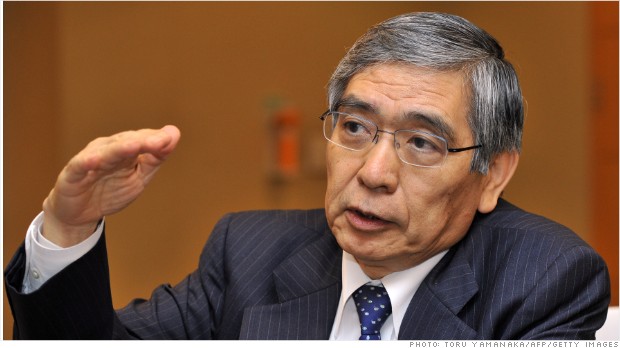
The narrative, in my opinion, comes down to three options (I may be over-simplifying it here):

Market Pricing
Market pricing in ~15 bps cut by in the next 6 months (1 year swap); but dependent on LIBOR JPY fixing movements (WIRP is not reliable because of thin liquidity in OIS market)
Why expectations are sky high tomorrow
BOJ expected to revise down FY2016 CPI and GDP materially (GDP currently 1.2% and core CPI from 0.5%). Note that this revision will be BOJ’s implicit admission that the target cannot be achieved during the Kurodas 5 year term.
JGBs market unable to support any increase in purchases…
50Y bonds will be an exception JGBs’ liquidity has been declining rapidly. In Sept 2015, IMF estimated that BOJ will hold ~40% of the JGBs market by 2016 and ~60% by end-2018. JCER (Japan Center of Economic Research) has also released estimated results indicating that BOJ will find it difficult to continue purchases around mid-2017. As of Jun 2016, BOJ already owns 37.4% of JGB market. This is perhaps why they decided to go negative in January, as interest rate targeting may be arguably more sustainable than monetary base targeting. As such, unless MOF starts to issue 50Y bonds, I do not expect JGB purchases to be increased.
Negative rate floor is theoretically at the storage cost of cash
At a tiered rate of -10bps, the BOJ is unlikely to be anywhere close to the floor (considering Switzerland is at -75bps – forgive my loose comparison). Also, Kuroda has emphasized that effects in NIRP were being felt in the economy, and that the economy would be worse-off without NIRP (no one knows). He even went as far to give NIRP credit for a pick-up in housing investment and sharp rise in rental housing. On the other hand, it is hard to imagine any central banker that would dismiss the effectiveness of their own policies.
On banks’ strong resistance…
BOJ Deputy Governor Hiroshi Nakaso also said in March argued that:
- Banks are slow to restructure business model
- Banks can achieve substantial margins by leveraging their intangible assets such as using them as collaterals
What about adverse effects on banks’ profitability?
On 20th July, BOJ released the Senior Loan Officer Opinion Survey, which showed that banks’ interest rate margin has shrunk again. Similar to other NIRP countries, banks have been slow to pass on the negative rates to their customers, especially in Japan where corporates have high ‘pricing power’. With exception to deposits at investment trust going negative, most institutional clients have not yet felt the effects of negative rates.
There are also some speculations about municipal bond-buying and Fiscal Investment and Loan Program (FILP)
Municipals: Low liquidity market; may act more as a regional government subsidy than economic stimulus; transmission is unclear
FILP: May be seen as proxy for helicopter-money since signal closer co-operation w fiscal authorities. (In the case of FILP bonds, funds supply resources to the Fiscal Loan Fund and their principal and interest repayment is covered by returns from these loans). Outstanding 90trn bond market may loosen constraints of JGBs limited supply.
ETF/REITs: Argument against it is market dominance and potential losses; both pretty insignificant hurdles compared to the other easing measures.